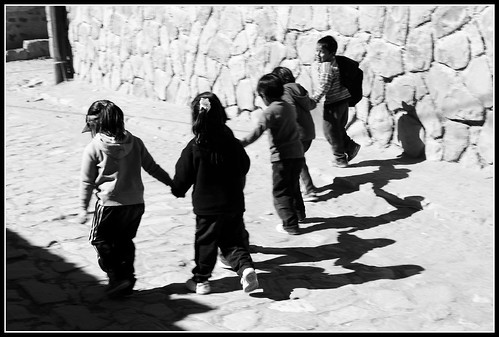The importance of visualization in mathematics education cannot be argued. By the time they reach middle school, Ontario students are exposed to a variety of visual tools such as, the number line, KWC – charts, tables or Venn diagrams, which are used to solve number sense problems.
In 2005 Ginsburg et al. published a comprehensive study in which they compared the educational system of the United States to that of Singapore. In terms of textbooks, the textbooks in the United States are very similar to those used in Ontario; often

Singapore Model Drawing Method
the publishers being the same. This study concluded that, though very visually appealing, most of the visualization tools in the United States Mathematics textbooks are introduced in context specific lessons and students practise using them mostly when solving routine, definition type of problems.
When students do not associate a context to a visual representation tool they usually use for that context or type of skill, and they are expected to create their own, they rely mostly on inefficient, concrete type of drawings. This is one of the many difficulties I believe our students encounter when asked to use visuals to help them solve word problems. Hence the need for a visual tool that can transcend the limitations of applicability to only familiar contexts related to a concept or set of skills.
When students solve problems, what information are they paying attention to? If they use a visual method, does the visual used represent some information in the problem or the entire problem? What is its role in the problem solving process? How efficient is it?
Duval (2006) emphasized the fact that students who have a hard time solving word (algebraic) problems rely too much on ‘shortcut” approaches, focusing mostly on algorithms, translating “key phrases” associated with computations, working only with symbolic representations and rushing to compute the numbers in the problems.
The mathematics education landscape in Ontario is experiencing a serious problem solving issue lately. In recent years (2012-2013; 2013-2014) the Education Quality and Accountability Office’s (EQAO) reported a decline in the Grade 3 (primary division) and Grade 6 (junior division) students’ ability to solve multi-step word problems in Number Sense, while they still demonstrate proficiency with computation skills. This data indicates clearly a difficulty to apply computations to the right context. Moreover, 26% of the entire cohort tested in 2014 achieved below the provincial standard in both grade 3 and Grade 6 and 19% met the standard in Grade 3 but not in Grade 6. That means that 45% of the students in our province are failing mathematics in elementary grades.
Additionally, reflecting on my own teaching experiences in the classroom I noticed a prevalence of students’ misinterpretation of the problem text and a rush to use arithmetic schemata to solve algebraic problems. When models are drawn they are mostly models of parts of the problem and not of the entire problem and they are often not used to solve it. This is the Model Drawing method or the Bar Method used in Singapore.
During the year 2014-2015 I conducted a TLLP (Teacher Learning and Leadership Program) project and implemented the use of Singapore Model Drawing with grade 6 students at my school. This model helps them understand a variety of problems, represent them in a way in which it becomes easy to understand the relationships between the known and unknown values in the problem translate them into correct algebraic equations, is the base of the solution plan and the core around which the student communicates his/her thinking.
I explored not only how students in Ontario develop and apply a visual model solve algebraic problems that is borrowed from a different culture but also what the causal conditions, the context and the intervening conditions are that would make the model method successful to them. Additionally, equally important is looking at factors that can prevent them from using the model to solve algebraic problems, such as conceptual, semantic, contextual and strategy knowledge.
Introduction – Why Singapore Model Drawing Method
The Primary Mathematics curriculum in Singapore is founded on the work of American Psychologist Jerome Bruner and on his the concrete-pictorial-abstract approach to learning. It was not the buzz surrounding recent TIMSS and PISA scores that lead me to the Singapore Primary Mathematics Curriculum but researching metacognition in mathematics while conducting a TLLP (Teacher Learning and Leadership Program) project in 2012-2013. In Singapore, metacognition is one of the core components of problem solving which is at the heart of their Mathematics curriculum. Exploring the way problem solving is taught in Singapore introduced me to the Mode Drawing method.
Model Drawing is the most unique feature of Singapore math. In 1983 Dr. Ted Hong Kho and his team introduced it in the Singapore Mathematics Curriculum. Initially, students were taught the model for the first time in grade 4 (Primary 4) and later this was changed to grade 3 (Primary 3). This method is believed to have helped Singaporean students bridge from arithmetic reasoning to algebraic reasoning when solving challenging word problems (Cheong, 2002; Ng, 2003). The model relies on drawing a visual diagram made up of rectangles that do not need to be scaled.
The model relies on the fundamental knowledge of part and whole relationship between numbers. A small rectangle is a part of a bigger rectangle representing the whole. The length is not important when the student represents an unknown value. Each rectangle is labeled with information from the problem, using either known or unknown values from the problem. The diagram allows students to see and draw meaningful relationships between the elements of the problem (both known and unknown) before they attempt to translate such relationships into abstract symbolic representations, the arithmetic or algebraic equations.
The model involves three stages: understanding the text of the problem, structural phase (drawing the model) and procedural-symbolic stage (translating the visual into arithmetic or/and algebraic equations). Therefore, the model drawing relies heavily on the process of understanding the situation presented in the problem before students attempt to solve it. It is also dependent on the use of metacognitive processes (Ng & Lee, 2009, p. 292). In Singapore, the model method is so prevalent in their mathematics textbooks that even parents are familiar with it (Yeap, 2013).
Theoretical Highlights
What is successful problem solving? This study’s understanding of successful problem solving does not equate with reaching an accurate answer but being able to understand the problem situation, represent it visually through a model that allows to work out the relationships between known and unknown and constitutes the basis of the solution stage (Bednarz & Janvier, 1996, Hegarty et al., 1992). Solving word problems has two major stages, the comprehension and the solution stages (Mayer and Hegarty, 1996).
What causes students to struggle with problem solving? When students struggle with the comprehension stage it might be because they have difficulties with translating the situation in the problem and representing it using various modes and switching back and forth between natural language and the other models of representation (Duval, 2006; Mayer, Lewis and Hegarty, 1992). Mathematical misunderstanding is caused, according to Mayer et al., by the “construction of a mental model of the situation that conflicts with the information in the problem statement (1992: 137)”. These researchers encourage the development of students’ qualitative reasoning as opposed to quantitative reasoning skills represented by performing an algorithm and focusing on an answer. The qualitative reasoning steps included in problem solving are translation (the problem’s text into a mental representation), integration (combining the relevant information into a mental representation), planning (the steps needed to solve the problem). The last step is execution (carrying out the planning) and uses quantitative reasoning. Mathematical misunderstandings are more likely to occur in the qualitative reasoning steps and not in the execution. Hence, students need more opportunities with the first three steps and not a focus on the last one. Obviously, the choice of problem-solving task becomes a condition here.
Why is the choice of problem solving tasks important? There are two types of problem solving tasks that need two types of reasoning: arithmetic and algebraic. An arithmetic problem is one where the start value is known and the unknown (or the result) values can be found by performing arithmetic computations to the known values. On the other hand the algebraic or “word” problem is one where the result value is known but not the start value. Solving direct computations to the known values will not solve the problem (Khng& Lee, 2009; Nathan & Koedinger, 2000). Mosely and Brenner (2009) argue that the two types of problems present different schemata that work together in order for the algebraic problem to be solved. However, when students apply only arithmetic schemata to solve algebraic problems they run into difficulties (Khng & Lee, 2009). As students attempt to use variables to express mathematical relationships other misconceptions may be revealed (Moseley and Brenner, 2009).
How can students make the transition between arithmetic and algebraic reasoning? The transition from arithmetic methods to algebraic ones is needed for students to be successful at solving algebraic word problems (Khng & Lee, 2009). Moseley and Brenner (2009) suggest (a) schema integration or the ability to successfully integrate variables into the process of solving arithmetic problems (b) using tables, graphics, diagrams that accompany the text so that the students translate a mathematical relationships presented in pictorial form, and (c) exposing students to non-routine problem solving situations which involves using variables to represent unknown. Kieran (2004) suggests a focus on numerical relationships and not only on the answer, a focus on inverses of operations, a focus on representing problems and not only solving them, a focus on the use of the equal sign and a focus on the use of both numbers and letters rather than only numbers to solve problems.
What constitutes an effective representation and how can students be helped in visualizing mathematical situations? Duval (2014) makes the distinction between visual representations and visualization. Visual representations are representations used in mathematics in mathematical treatment of concepts, heuristic exploration in problem solving and educational tools in the acquisition of math concepts (Duval, 2014, p.159). The model drawing approach creates a visual representation of the problem. Visualization is the recognition, spontaneous or not, of what is mathematically relevant in any visual representation produced (Duval, 2014, p.160). He argues that there is a gap between what teachers see and what students see and this is particularly one of the focuses of this study method. In what way, students’ visualization differs from that of the teacher? Figural units are individual elements that are recognized as significant or informative in a visual representation.
References:
Bednarz, N. & Janvier, B. (1996): Emergence and Development of algebra as a problem-solving tool: Continuities and discontinuities with arithmetic. In Bednarz, N., Kieran, C. & Lee, L., (Eds.), Approaches to algebra. Perspectives for research and teaching, 115-136, Dordrecht, The Netherlands: Kluwer.
Cheong, Y.K. (2002): The model Method in Singapore, The Mathematics Educator, 6(2), 47-64
Duval, R. (2006): A cognitive analysis of problems of comprehension in a learning of mathematics. Educational Studies in Mathematics, 61, 103-131
Duval, R. (2014): Commentary: Linking epistemology and semio-cognitive modeling in visualization. Zentralblatt für Didaktik der Mathematik (ZDM), 46, 159-170.
Fan, I. & Zhu, Y. (2007): From convergence to divergence: the development of mathematical problem solving in research, curriculum, and classroom practice in Singapore. Zentralblatt für Didaktik der Mathematik (ZDM), 39, 491-501
Ginsburg, A., Leinwand, S., Anstrom, T., Pollock, E. (2005): What the United States can learn from Singapore’s world-class Mathematics system (and what Singapore can learn from the United States): an Exploratory Study. American institutes for Research
Higgins, K.M. (1997): The effect of year-long instruction in mathematical problem solving on middle school students’ attitudes, beliefs, and abilities. The Journal of Experimental Education, 66(1), 5-27
Highlights of the Provincial Results Assessments of Reading, Writing and Mathematics, Primary Division (Grades 1–3) and Junior Division (Grades 4–6) English-Language Students, 2013–2014 Retrieved from http://www.eqao.com/pdf_e/14/provincial-report-highlights-elementary-2014.pdf
Highlights of the Provincial Results Assessments of Reading, Writing and Mathematics, Primary Division (Grades 1–3) and Junior Division (Grades 4–6) English-Language Students, 2012–2013, Retrieved from http://www.eqao.com/pdf_e/13/Elementary_Highlights_2013_en.pdf
Khng, K.H. & Lee, K. (2009): Inhibiting inference from prior knowledge: Arithmetic intrusions in algebra word problem solving. Learning and Individual Differences, 19, 262-268
Kieran, C. (2004): Algebraic thinking in the early grades: What is it? The Mathematics Educator, 8(1), 139-151
Lewis, A.B. (1989): Training students to represent arithmetic word problems. Journal of Educational Psychology, 81, 521-531
Mayer, R.E., Lewis, A.B., Hegarty, M. (1992): Mathematical Misunderstandings: Qualitative reasoning about quantitative problems. Advances in Psychology: The Nature and Origins of Mathematical Skills, 91, 137- 153
Moseley, B. & Brenner, M. A., (2009): A comparison of curricular effects on the integration of arithmetic and algebraic schemata in pre-algebra students. Instructional Science, 37(1), 1-20
Nathan M.J. & Koedinger, K. R. (2000): Teachers’ and researchers’ beliefs about the development of algebraic reasoning. The Journal for Research in Mathematics Education, 31(2), 168-190
Nathan M.J. & Koedinger, K. R. (2004): The real story behind story problems: effects of representations on quantitative reasoning. The Journal of the Learning Sciences, 13 (2) 129-164
Ng, S.F. & Lee, K. (2005): How primary five pupils use the model method to solve word problems. The Mathematics Educator. 9(1), 60-83
Ng, S.F. & Lee, K. (2009): The Model Method: Singapore Children’s Tool for Representing and solving algebraic Word Problems. Journal for Research in Mathematics Education, 40(3), 282-313
Yeap, B.H. (2013) The Model Method, https://www.youtube.com/watch?v=Em2yERb3Kfs, Retrieved on August 4, 15




 “
“




